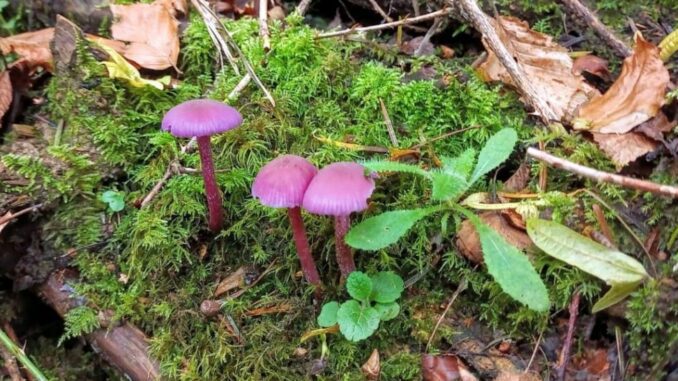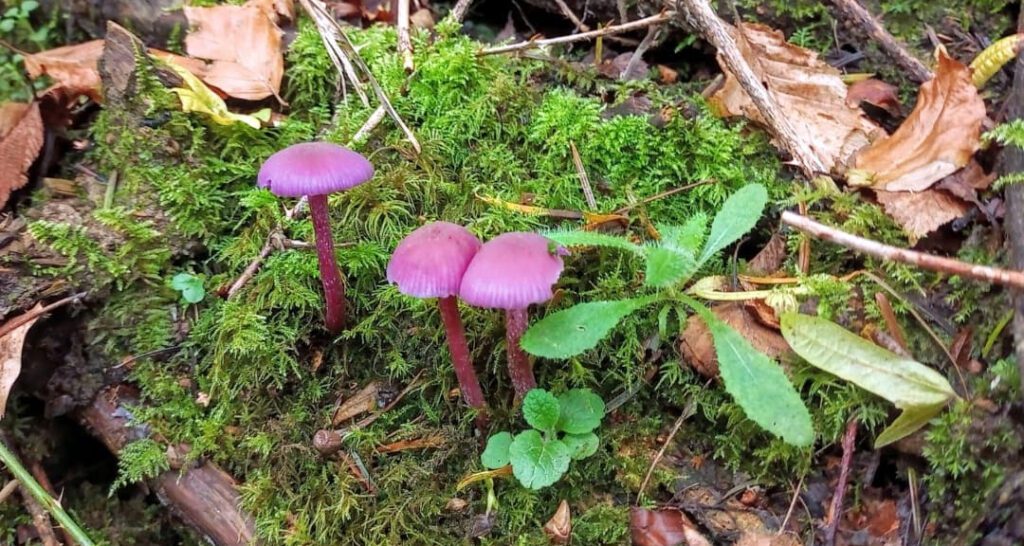

Is The Amethyst Deceiver Edible?
The Amethyst Deceiver also known as Laccaria amethystina or Purple Mushroom is a very good edible! It is not poisonous at all.
It is safe to eat, but read on to find out how to identify and prepare it.
Where Are Amethyst Deceivers Found?
- Habitat: on acidic soil, mainly in deciduous forests.
- Season: especially in October, at the same time as the majority of fall mushrooms that you can find on our Mushroom Maps, available here.
Identify The Laccaria Amethystina
A purple mushroom that does not leave anyone indifferent and intrigues with its color!
- Cap: its cap is quite small and measures between 1 and 3 inch in diameter. Its color is dark purple and it is relatively pale.
- Gills: its gills are adnate, fairly spaced and the same color as the cap (purple)
- Stem: the stem is between 2 and 4 inch high, and it is also purple.
- Flesh: the flesh is very thin and purple.
Amethyst Deceiver Lookalikes
It can be confused mainly with the Rosy bonnet or the Lilac bonnet
Amethyst Deceiver Recipe
The best way to prepare and cook Amethyst Deceivers is to eat it with an omelette!
Cooking Guide
- Heat a frying pan with a drizzle of neutral oil (sunflower, for example) and a knob of butter.
- Fry, for 3 minutes, 3 good handfuls of amethyst clitocybes in your hot pan so that they release their water.
- Let cook for about 10 minutes over low heat to evaporate most of the water.
Recipe: Omelette
- Have a go at a classic omelette. When your omelet starts to set, pour your mushrooms over half of your omelet.
- Fold the second half of the omelet to trap the mushrooms inside it and cook for a few more minutes.
- Add some fresh cream at the end of cooking.
- Season with a little pepper and salt.
Find Mushrooms With Our Maps!
The Amethyst Deceiver is a great mushroom to encounter in the forest and its purple color is amazing. It’s a pleasure to cross its path.
Unfortunately, this one is not referenced on our maps. But if you want to be accompanied in the forest and know where to find the most favorable areas for other mushrooms, visit our website to explore our Mushroom Maps!
You have reached the end of this article, congratulations!
Leave a Reply